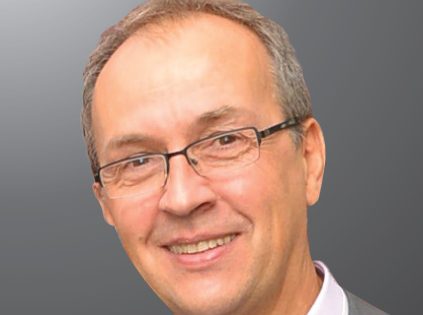 Broadband TV News talks to Pascal Orhan, founder and principal analyst of Dataxis and organiser of the NexTV conference series. On November 29 and 30, the company organises and event in Berlin, covering the CEE and DACH markets, with the theme The OTT disruption: Streaming is the new broadcast. More information about the event can be found here.
Broadband TV News talks to Pascal Orhan, founder and principal analyst of Dataxis and organiser of the NexTV conference series. On November 29 and 30, the company organises and event in Berlin, covering the CEE and DACH markets, with the theme The OTT disruption: Streaming is the new broadcast. More information about the event can be found here.
Broadband TV News is an active partner in the Berlin event, with Julian Clover and leading CEE analyst Chris Dziadul moderating a number of sessions. We will also be filming speakers and clients for publication in our Video Roundups.
– For the second time, you are organising an event in Berlin focused on CEE – can you tell a bit about last year’s congress?
Yes, last year we created something new for us and for the industry. A place for players of the region to meet and exchange. It was a success and this year we expect the conference to be better again. In particular we are giving more emphasis on innovation. We focus on operators, large local broadcasters, that should be known better, and innovative OTTs. We have more than 60 executives as speakers representing really a lot of the reality of the market. In total, we expect 200+ attendees during these two days.
– The central theme this year is The OTT Disruption – streaming is the next broadcast – can you elaborate on this?
Of course, the reality is not only that ! But it would be wrong to believe that innovation is in the West, and it will only come later in CEE. It is almost the contrary. OTT is there, and it is a key component for the growth of all operators. But, because of the structure of the market, its fragmentation and relatively low pay TV ARPU, it is not related so far to the usual names: Netflix, Amazon Prime Video etc. So it is so far much more an opportunity than a threat. We will discuss the opportunities!
– What are other themes at his year’s event?
Besides OTT, innovation in general is present in many other ways, that will be discussed during the event, such as : advanced STB, artificial intelligence, analytics, IoT and smart home, user recommendation, new advertising solutions. In addition, we will address the way many operators are moving to Gigabits offers, and the impact on the TV and video business. And of course pay TV operators content strategies; as well as FTA TV growth alternatives.
– At the moment, there is still a lot of traditional distribution (cable, satellite) in CEE – how does this compare to Western Europe. Do they have different challenges?
In many cases, they are in better position, because the incumbent does not always have a next generation broadband infrastructure in place, or not at the same scale. DTH operators are moving to hybrid OTT. Cable operators that still have a low penetration of digital need to accelerate the migration, which is completed in Western Europe. But of course they are many different cases. A lot of cable operators are really small, even in relation to small countries, and what is happening is consolidation.
– How can players in CEE distinguish themselves with content?
Again, what is specific to the region is the fragmentation, small market size, relatively low TV ARPU, and low advertising TV market. However, in this context, a very long list of operators have become editors of their own branded pay TV channels, in sport, movies, series, documentary, kids, etc. Further you will find many local players competing with very known US TV networks on various segments. What we can notice is there is not yet any sports rights “bubble”. You still can watch the Champions League at a reasonable price or even for free! This is more an advantage for the market than the contrary, and we don’t believe it will change in the medium term.